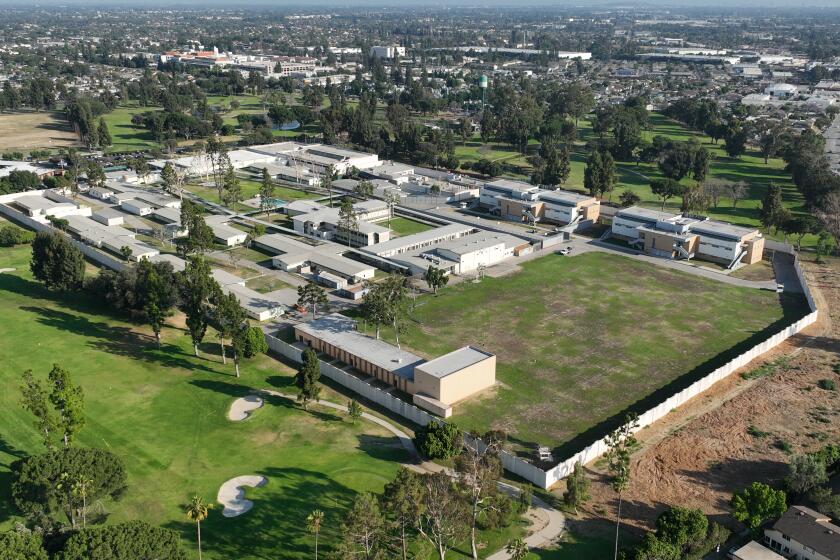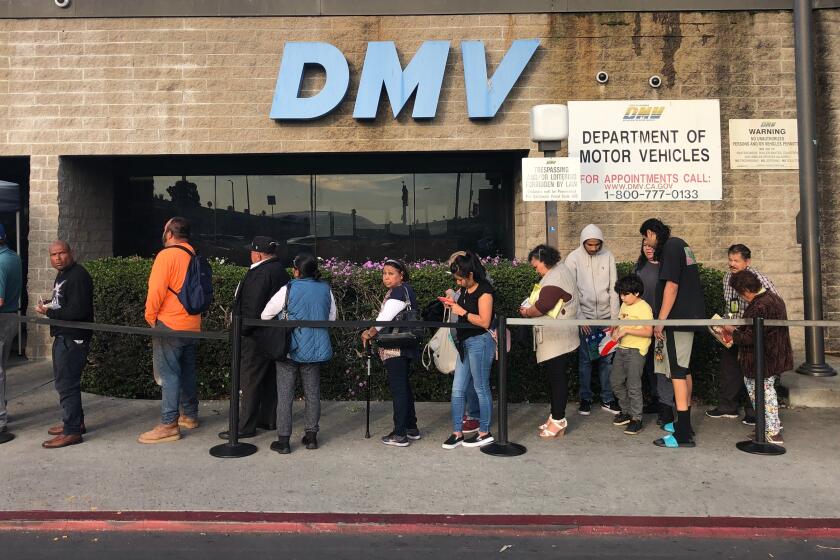17 charged in string of brutal kidnappings and slayings in San Diego suburbs
- Share via
Authorities announced charges Thursday against a Mexican gang that took Tijuana-style violence to the upscale suburbs of San Diego County, kidnapping, torturing and killing well-to-do residents, even after some families paid large ransoms.
The gang, a rogue cell of the Tijuana-based Arellano Felix drug cartel, moved across the border in 2002 and posed as U.S. law enforcement, donning FBI and police uniforms and caps while snatching victims outside homes and public places, said San Diego County prosecutors.
Nine victims were killed from 2004 to 2007, and the bodies of two of them were dissolved in chemicals at a rented house in San Diego. Gang members were also charged with trying to murder a Chula Vista police officer in September 2005, peppering his car with high-caliber bullets before fleeing in a car.
The gang targeted people it suspected of having links to organized crime, although some victims had no known ties, authorities said. Prosecutors charged 17 defendants, including gang leader Jorge Rojas Lopez, who is serving a life sentence for one of the abductions. Eight of those charged Thursday remain at large. The others are in custody on previous charges.
“This rogue group of individuals is responsible for a string of brutal murders and kidnappings that demonstrate the ugly reality of cross-border violence,” said San Diego County Dist. Atty. Bonnie M. Dumanis.
Spillover crime from Tijuana’s gang wars is relatively small, given the scale and brutality of the violence there. Nevertheless, the gang’s migration to the San Diego area reinforces concern that border vigilance is no match for Mexican organized crime.
After Arellano-Felix cartel members in 2002 killed Lopez’s brother in a gangland dispute, he moved his cell across the border to stage retaliatory attacks against anyone suspected of cartel links, according to authorities.
A series of drug rip-offs, robberies and ransom kidnappings followed. The gang, called the Palillos -- Spanish for toothpicks -- also got involved in drug trafficking, according to authorities.
Police started getting chilling reports of criminals using tactics typically seen only on the streets of Tijuana: Men dressed in police uniforms and bullet-proof vests snatching victims in daylight and throwing them into cars before speeding off into traffic. Bodies bearing signs of torture were dumped.
The crimes haunted residents in such suburbs as Chula Vista and Bonita, where many prominent Tijuana families had moved to escape violence only to find that criminals had followed and blended into the cookie-cutter anonymity of American suburbia.
The veteran gang prosecutor leading the case, Deputy Dist. Atty. Mark Amador, said the gang was the most vicious he’s ever prosecuted. “I’ve never seen a more ruthless, cold-blooded, sociopathic group,” he said.
A break in the investigation came in June 2007, when an FBI SWAT team raided a two-story home in Chula Vista where a Mexican businessman had been held captive for eight days. Lopez and four others were arrested, paving the way for more victims to step forward.
The DNA analysis of the evidence, authorities said, was the largest undertaken by the San Diego Police Department, a two-year effort staffed by three full-time analysts. The federal Immigration and Customs Enforcement, the Drug Enforcement Administration and the San Diego County Sheriff’s Department also assisted.
Of the 17 defendants, nine are in custody; some of them already have been convicted on other charges. Of the eight fugitives, some are believed to have fled to Mexico. U.S. authorities said their Mexican counterparts are assisting in the investigation.
Some of the gang members were U.S. citizens who lived in upscale homes. They rented several other residences where they kept hostages. Neighbors, authorities said, would see groups of young men coming and going but didn’t suspect criminal activity.
The Chula Vista case in June 2007 was typical of the murky methods used in the crimes. The victim, Eduardo Gonzalez Tostado, a Baja California champion off-road racer, went to the home expecting to meet a woman.
Instead he was beaten, cuffed, shot with a Taser and thrown into a small room. Family members eventually paid nearly $200,000 in ransom money. At the trial, defense attorneys, citing FBI interviews, alleged that Gonzalez had smuggled drugs for the cartel.
Gonzalez, in his testimony, denied the accusation.
The Chula Vista officer attacked in 2005 was responding to an attempted abduction. After a chase through residential neighborhoods, the suspects’ car stopped near a shopping center and two gunmen jumped out. One stood on each side of the car as they fired more than a dozen rounds. The officer ducked inside his car and escaped injury.
He has left the force, citing stress from the assault, according to Amador, the prosecutor.
More to Read
Sign up for Essential California
The most important California stories and recommendations in your inbox every morning.
You may occasionally receive promotional content from the Los Angeles Times.










